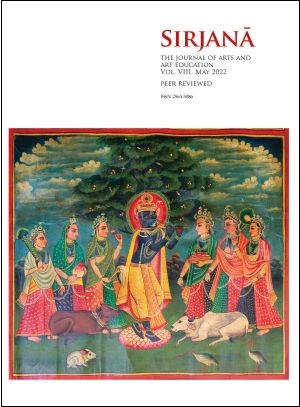The Practice of Maṇḍala Art during Tihāra by Newars
DOI:
https://doi.org/10.3126/sirjana.v8i1.46656Keywords:
Swonti, maṇḍala art, Tihāra, Newar, Mhapūjā, LakṣmīpūjāAbstract
Tihāra is celebrated on Aswin krishna paksha trayōdaśī, caturdaśī, and Ashwin krishna aum̐ sī, Kartik śukla paksha pratipadā and dvitīyā by all the ethnic groups of Nepal. Even though Tihāra is known as Yamapañcaka, the Newars call it Swonti Nakha:. Although it is celebrated for five days, the three days – Lakṣmīpūjā, Mhapūjā, and kijāpūjā are celebrated as the main days by the Newar community. During these days, jalamaṇḍala, pōtāymaṇḍala, red powdermaṇḍala, tāymandala, pōtāymaṇḍala, new paddymaṇḍala, black soybeanmaṇḍala, gēdāmāsamaṇḍala, ākhēyamaṇḍala, and the dot oilmaṇḍala are placed at the center, and the eight-petal lotus is placed out of the maṇḍalas. The maṇḍalas and the different items used in Swonti nakha: represent five elements. Buddhists consider a maṇḍala as Saṅghamaṇḍala whereas the Hindus believe that a mandala symbolizes various deities. Although the maṇḍala is made for the purpose of worshiping, no uniformity is seen in its features. As the worshipping is done, a spouse of the patriarch sweeps mandalas by a groom from the top to the bottom which is left that night as it is, and immersed its remains in a holy river the next morning.




